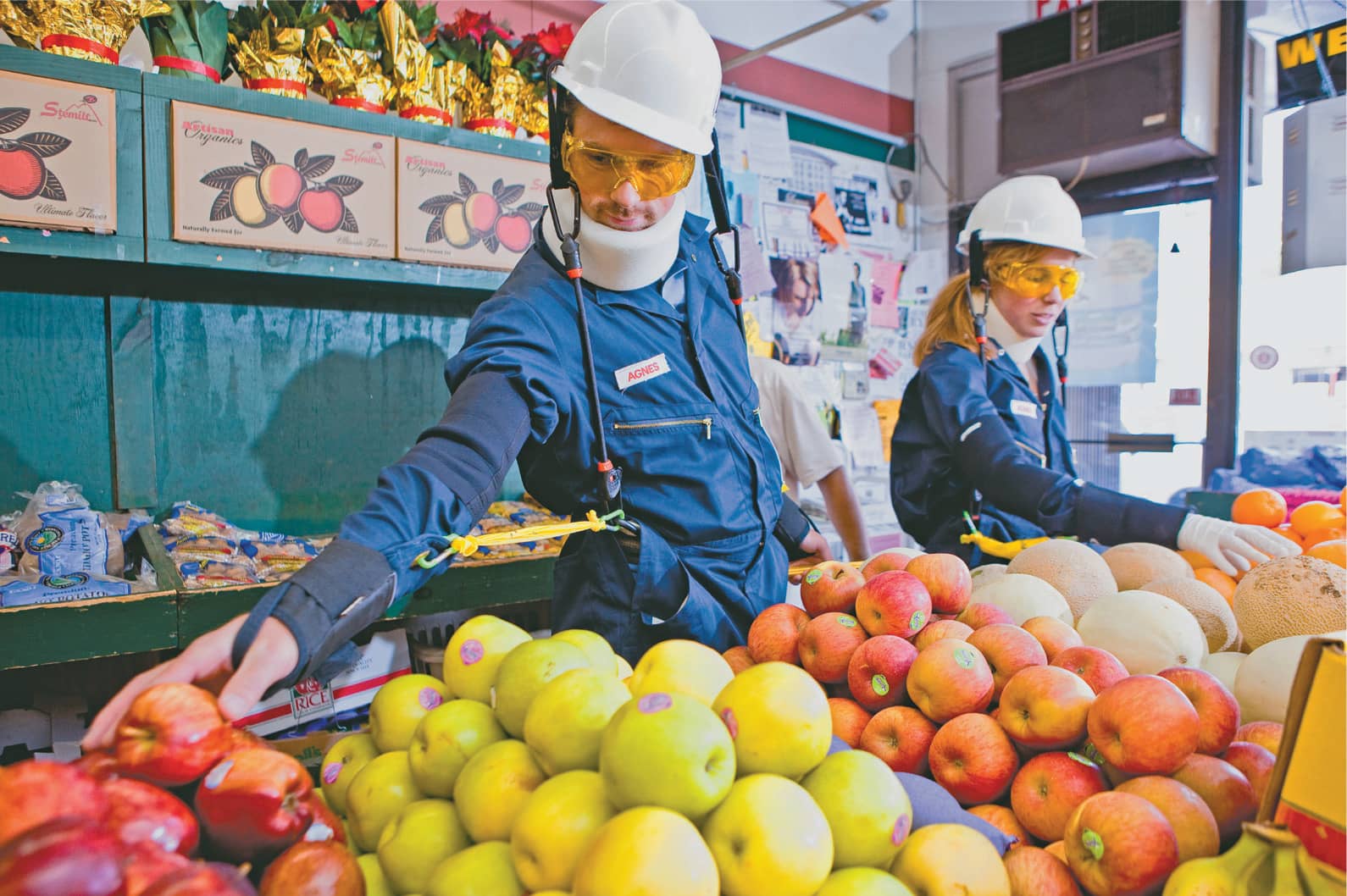RESEARCH METHOD
77 Simulation Exercises

Simulation exercises are deep approximations of human or environmental conditions, designed to forge an immersive, empathic sense of real-life user experiences.
Simulation exercises have an established history across various professions. Flight simulators have long been used for military, aircraft, and NASA training, and driving simulators have been used for driver’s education. Virtual worlds simulate real-world conditions, placing people in situations that test their response time, decision making, or interactions. Students of medicine and physical or occupational therapy commonly spend time in wheelchairs or blindfolded, to empathically experience the patients’ world of restricted mobility or visual impairment. The intent of simulation exercises for design research teams is to likewise form a tangible sense of user empathy, influencing design sensitivity and decisions through direct, although simulated, experience.
Simulation exercises for designers might approximate the limitations or disabilities that are experienced by people with physical disabilities, brain injuries, or age-related sense and cognition deficits. Human factors engineers at the Ford Motor Company developed a “Third Age Suit” that restricted mobility and senses, simulating the deteriorated agility that is associated with aging, to increase the sensitivity of designers and engineers in producing the Ford Focus automobile.1 Similarly, researchers at the MIT AgeLab have developed a suit and helmet system that simulates physical conditions of the elderly, to inspire empathy and innovation in design and marketing.2
Low-tech versions of simulation can also achieve the desired results of empathetic sensitivity among designers. In “geriatric sensitivity training” sessions, for example, participants wear glasses simulating yellowing of the cornea, macular degeneration, cataracts, or stroke, while attempting to perform everyday tasks such as reading and eating. Latex gloves reduce tactile sensitivity while threading a needle; and an “unfair hearing test” simulates audio as people with hearing deficits might experience it. Designers then translate these experiences into implications for design.3
Designers are involved in the creation of simulated environments, whether through digital games and virtual reality, or physical space and artifacts. Patricia Moore of Moore Design Associates has designed several simulated environments for rehabilitation facilities, with mock communities that include various street surfaces, signage, grocery stores, ATMs, home spaces and appliances. These simulation environments are used in training therapies for conditions ranging from balance disorders, to post-traumatic stress disorder and depression, to brain injuries, allowing patients to make progress toward independence in safe conditions.4
1. “Third-Age Suit Helps Ford to Understand Mature Drivers,” http://media.ford.com/article_display.cfm?article_id=624
2. Singer, Natasha. “In a Graying Population, Business Opportunity.” The New York Times, February 5, 2011, http://www.nytimes.com/2011/02/06/business/06aging.html
See also: http://agelab.mit.edu
3. Hanington, Bruce. “Factoring the Human in Design Education” in Proceedings of the International Conference on Affective Human Factors Design (CAHD). Asean Academic Press, 2001.
4. Kaplan, Melanie D. G. “At the VA, Preparing Brain-injured Veterans for the Real World.” Smartplanet, Feb. 2, 2011, http://www.smartplanet.com/people/blog/pure-genius/at-the-va-preparing-brain-injured-veterans-for-the-real-world/5451
5. See note 2 above.
Further Reading
Sommer, Robert, and Barbara Sommer. A Practical Guide to Behavioral Research: Tools and Techniques. New York: Oxford University Press, 2002.

Researchers perform everyday tasks wearing the “Age Gain Now Empathy System” (AGNES), developed in the MIT AgeLab. Calibrated to simulate the dexterity, mobility, strength, and balance of a 74-year-old, AGNES is a suit and helmet that constrains the neck and spine, yellows vision, restricts bending, throws off center of gravity, and reduces tactile sensitivity. Simulations are intended to encourage designers and marketers to innovate as they address real needs, in this case, the needs of the elderly.5
Courtesy of Nathan Fried-Lipski / MIT AgeLab


Low-tech simulations expose designers to age-related deficits, such as deteriorated vision and mobility, for empathic translation into design criteria.
